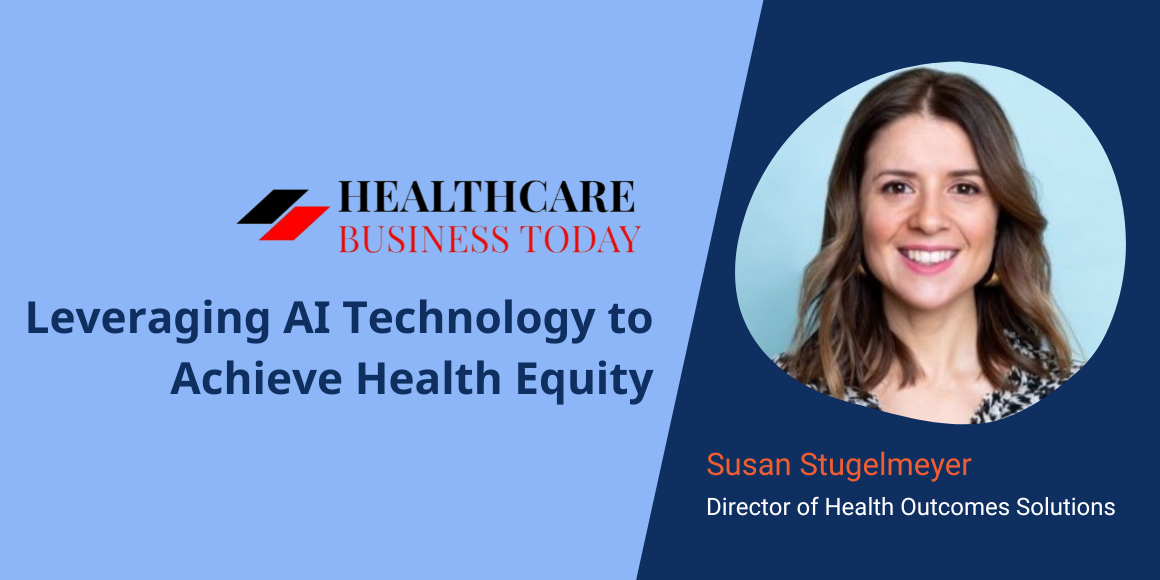Original Publication: Healthcare Business Today
For decades, healthcare organizations have struggled to address racial and ethnic disparities throughout the member journey. The emergence of AI technology provides payers with new opportunities to attract, engage, and retain new members from culturally and linguistically diverse communities.
Empowering Health Organizations to Advance Health Outcomes
Healthcare organizations have long attempted to address health inequities at the sub-population level. However, without adequate tools in place to track specific demographic information and streamline communication for patients with limited English proficiency (LEP), initiatives have fizzled. But that’s about to change.
The incentives for improving health equity have never been stronger. The COVID-19 pandemic threw existing disparities into sharp relief, and The Centers for Medicare and Medicaid Services (CMS) has singled out health equity as one of its key areas of focus for innovation. What’s more, new advances in artificial intelligence can fill in the data gaps that stymied previous efforts.
Overcoming a Key Obstacle to Health Equity
It’s clear that health outcomes improve when care and communication strategies are population-centric: closely tailored to meet the needs and preferences of the population being served. To deliver this level of care, payers need in-depth data about the people they serve. Clear data helps organizations understand where to focus their efforts and meet the needs of the populations they serve. Identifying core populations and tailoring strategies yield better health outcomes in the long run.
Unfortunately, this data is not always available directly from the members themselves. Previously, payers were left with no option but to do the best they could with the data they had. Without current and accurate data on relevant characteristics such as race, ethnicity, and age, how could payers’ outreach efforts be effective enough to close healthcare gaps? They couldn’t … until now.
How AI Solves for Missing Data
Missing data no longer needs to stand in the way of achieving health equity. Now, health plans can get the information they need to serve the needs of their varied member populations.
The key is leveraging AI to fill in data gaps in order to effectively engage members of all cultures and backgrounds. Healthcare organizations are calling on the expertise of language solutions partners (LSPs) to reach a more diverse membership base with the help of AI technology.
For example, United Language Group has used AI to develop a multilingual community engagement campaign for a U.S. health insurer entering new markets. Understanding the population’s demographics meant we could reach out to current and potential members in their preferred language and through their preferred media, resulting in improved member engagement and increased health and insurance literacy.
Through critical analysis of the ethnicity and language preferences of their populations, organizations can ensure their language access programs are accurate, robust, and prioritized. AI provides invaluable assistance in this endeavor.
Analyzing Outcomes for Diverse Populations
As payers collect data about the populations they serve, they can develop strategies to improve health outcomes.
At-risk populations often endure suboptimal care due to communication issues. Even small gaps in relaying or following up with LEP patients can have resounding effects on these sub-populations and lead to adverse health outcomes. And members will only tolerate these shortcomings for so long. Soon enough, members who have these types of poor experiences will seek service elsewhere.
Payers must be committed to improving experience and outcomes across all populations in order to satisfy diverse membership. The answer is culturally adapted communication that is informed by the data we get from AI.
Improve Equity through Cultural Engagement
Healthcare cannot only be about responsive treatment and transactional services. Healthcare initiatives must actively anticipate, and therefore mitigate, health risks through the implementation of preventative care and cultural engagement. The AI-derived data paves a road map for cultural engagement to attract and acquire new members because knowing the target audience and tailoring communication are key.
Now that we have the demographics, organizations can define and implement strategies to truly drive health equity with cultural engagement beginning with these baseline tactics:
- Ensure potential members receive collateral with invitations to join health plans, both in English as well as their native language.
- Provide contact support information to members, including a phone number where they can be immediately connected with someone who speaks their language.
- Provide answers to all member questions in the member’s native language.
- Help members enroll in a membership plan that’s right for them.
Knowing the target audience and tailoring communication are key. Language preferences and ethnicity are just starting points. Now, thanks to cutting-edge AI technology and strategic language access planning, payers can take the next major leap forward in providing truly equitable healthcare for all.

